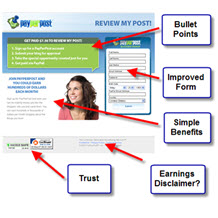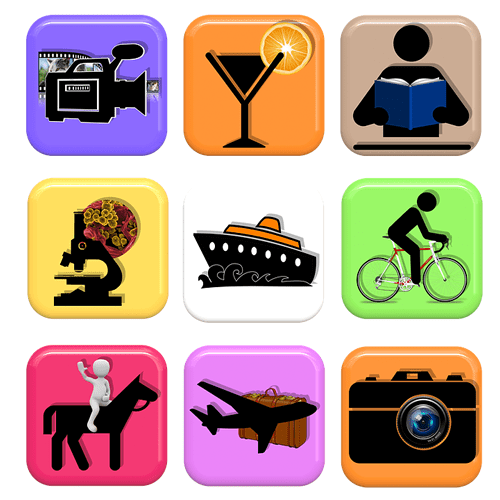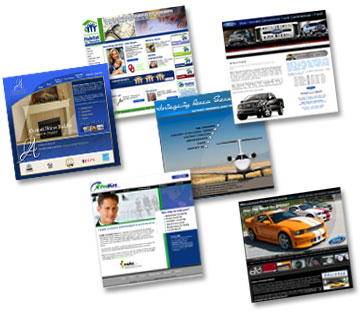
by Marelise da Silva | Apr 21, 2016 | Content Marketing, Website Optimization
Statistics show that 94% of companies claim that personalisation is a key component of their success, while 56% of consumers would happily purchase from a company that provides good personalised service. It’s stats like these that have led to the development of adaptive content – that is, using personalisation to enhance the customer experience and preparing content for delivery across multiple platforms. By implementing these into your content strategy, you’ll quickly be able to build your awareness, trust and engagement with new and existing customers.
There are five elements that are crucial to the success of your adaptive content strategy:
- Reusable content: content that you can use on multiple platforms, in different formats, to reach a wider range of customers.
- Structured content: small chunks of content that can be used on multiple devices, including mobile.
- Presentation-independent content: raw content, without over-the-top formatting.
- Meaningful metadata: the hidden data that describes the purpose and intent of the content.
- Usable CMS interfaces: a simple, functioning system that makes the delivery of the above elements possible.
As with most areas of business, for success, you need a strategy. You’ll need to build a strategy for personalisation, looking at your ideal audience and determining what type of content best supports this audience. You also need to consider the challenges of different devices – responsive web design is essential. Adaptive content requires a vast investment of time and resources, so you need to determine if it’s worth it for your business.
Identifying the chunks of your content useful for adaptive content is not that difficult. Here’s how:
- Every photo or graphic should be described, including keywords – think about how the content will be categorised, so it can be manipulated by machine code.
- Identify your best-performing content.
- Use verbatim quotes using exact wording.
- Create stand out headlines, differentiated in a way that machine code can recognise and call it out.
- Set the first few words of the article in a large font.
- Ensure the lead-in, or first paragraph to your story is awesome.
- Attribute sources and refer to other places of importance – be consistent about this.
- Create a nutgraf (nutshell paragraph), containing all the essential elements of the article, in a concise summary.
- Highlight a section for special emphasis
- Include a short audio or video segment that introduces the content and entices the visitor to continue.
By having your content ready to pull into adaptive content feeds, you’ll be ready for publication on any and all platforms. Don’t be left behind. To keep on top of the latest and greatest in digital marketing, contact us – we’ll happily take you through the ins and outs of adaptive content.

by Francois Muscat | Apr 20, 2016 | Content Marketing, PPC, Website Optimization
When referring to a landing page, this means the page a visitor arrives at after clicking on an advert. Inexperienced marketers will direct all their PPC traffic to their homepage, but this can be a mistake. Having landing pages tailored to different offers can be just the thing to provide a quality experience for your visitors and to drive conversions.
Great landing pages that convert, have a number of traits in common. While some of these tips may seem obvious, results don’t lie, so let’s look at some pointers:
- The best landing pages are short and sweet, containing the necessary information but not overwhelming the visitor with endless detail. Give the audience the essential information to pique their interest.
- They provide high quality content that inspires trust. Good, relevant and useful content goes a long way with new visitors.
- Good landing pages make conversion easy, with as few barriers between arriving and buying as possible. If forms are required, make them simple and user-friendly. If it’s a download, make the button obvious.
- Don’t skimp on design. The information architecture is vital – you need simple and obvious navigation, with nothing coming between the visitor and the conversion.
- Calls to action are clear as a bell, telling your visitors exactly what to do and how to do it. Use action words to encourage clicking!
- Landing pages need eye catching headlines, with sub-headlines for more explanation. The copy below that should be engaging, aiming to reach the visitor on a personal level.
- Use video where appropriate – if you can provide information and entertainment at the same time, you’re in business!
- Landing pages should be able to convince the user to stay on your page in under 8 seconds. You only have their quick glance, so use colours and fonts that grab the attention.
- Use quality images that emphasise your offering; this will create a better experience overall.
- Make sure the landing page uses the same keywords from the PPC ad text – you don’t want your visitor to think they’ve landed on the wrong page. Give them what they came for and don’t make them hunt for the product in the ad.
- Show testimonials from happy customers: word-of-mouth has always been a driving force of success.
- Make sure your landing page is mobile friendly – this can double your conversions.
- Landing pages that are slow to load are one of the biggest reasons for bounce rates, so keep your images realistic sizes and use a speedy web host.
If your landing pages are a little lacking, contact us for some assistance. We are digital marketing experts and can help get your online marketing strategy back on track!

by Francois Muscat | Apr 18, 2016 | Content Marketing, Website Optimization
A landing page is a website page accessed when visitors click a link found on another website. A landing page is important in digital marketing. An effective landing page is able to increase conversion rates. It can be the difference between converting a visitor into a customer and repelling that visitor away.
For this reason alone, using a winning landing page strategy increases conversion rates and boosts website traffic.
Creating a winning landing page
There are several strategies used to create an effective landing page:
- Create landing page goals
A winning landing page needs to have goals to successfully convert visitors into customers during B2B marketing. Objectives to consider when creating your land page are:
- It must communicate brand values to potential customers and visitors
- Effectiveness in convincing visitors to register to generate leads
- Must be able to profile visitors for future online advertising campaigns
- Provide value to site visitors through PPC content that is different from other sites
- Provide different methods to acquire visitor details without being intrusive
- Show relevance in your content marketing
An effective landing page shows relevance to visitors. Since visitors have a goal in mind when visiting your landing page, make sure it is relevant to them. Give them the information they are looking for. An effective SEO landing page shows visitors they have visited the right place when they can get the right information, product or service.
- It must integrate with referral source
A referral source leads visitors to your landing page, through link building. A referral source is the starting point visitors used to reach your site. This could be a search engine, other websites or even social media sites. To this end, during content marketing make sure the landing page content and that of the referral source are related. The landing page content needs consistency or else visitors will leave the site, no matter how attractive your website design is, and never come back when deceived.
Other strategies used to create a winning landing page include:
- Right page length
- Creating a flowing design land page
- Interesting and meaningful graphics
- Considering longevity of landing pages as a digital marketing strategy
At WSI OMS, we offer an array of digital services guaranteed to make your business an online success. If you are looking for a value adding digital partner, contact WSI OMS today.

by Marelise da Silva | Apr 7, 2016 | Facebook, Social Media Optimization, Website Optimization
With over 1.5 billion people regularly using Facebook, there’s pressure on the developers at Facebook to constantly come up with new features and products, so it can be hard to keep up with this social media storm. Even if you think you know it all, there’s probably a whole bunch of tips, tricks and interesting things you didn’t know you could do on your Facebook page or profile. So let’s look at a few, shall we?
Did you know you can make your online video calls with Skype through your Facebook page? Add the Skype app to your account and start talking!
Did you know you can edit your photos directly on your profile? Using an app like Lunapic, you can add custom animation effects, two-tone colours, make greeting cards…
Did you know you can unclutter your Facebook content? With “Interest Lists”, you can organise your content into lists in a most convenient way.
Did you know about “Nearby Friends”? Activating this feature will push notifications to your phone when one of your Facebook friends has checked into a location near you.
Did you know you can tag friends in videos? You all know about tagging in photos, but you can do it in video too, pretty much the same way.
Did you know you can create and distribute petitions? With the YouSign.org.app you can use Facebook’s powerful network of people to share petitions for a good cause.
Did you know you can edit your Facebook ad preferences? The advert preferences list a range of topics that Facebook believes you may be interested in. You can remove or add to your preferences by going into your Settings, selecting Adverts, then editing in the “Ads based on my preferences” section.
Did you know that images posted via Instagram get more engagement than native Facebook image posts? Up to 23% more, according to Buzzsumo’s study.
Did you know you can download all of your Facebook information? Pictures, information and content, not to mention memories and conversations, can all be downloaded and stored in a safe (and private) place.
Did you know posts with hashtags receive less engagement than those without? Hashtags have become the default way to search for content on Twitter and Instagram, but do not have much impact on Facebook.
Did you know you can save links for later? When you don’t have time to watch a video or read a post, but want to come back to it, you can easily save the link, using the “Save Link” button on the drop-down menu in the right hand corner.
Did you know you can sync your Facebook calendar with your Google one? Add events by URL from Facebook to your Google calendar and never miss an event.
The world of social media and using this digital marketing tool to promote yourself or your business, can be baffling at times. If you need help with any aspect of your social media strategy, contact us.

by Marelise da Silva | Mar 24, 2016 | Content Marketing, Website Optimization
Microcopy is the term for the small bits of copy on a website’s interface that help users with their journey across your site – error messages, contact form explainers, hints… It doesn’t sell your services or products directly, but it backs up your brand values. Its goal is to make the experience easier, alleviate customer concerns and help users through the sticking points on your website. It is an essential part of the purchase process, yet many sites ignore microcopy.
Some examples of microcopy are the prompts you see in text blocks, like the one on Facebook that says “What’s on your mind?” There are lots more examples on flickr’s group pool.
Microcopy can be used very effectively to iron out little hitches on a website, like a prompt to remind users to enter certain details, when you identify a common error. The secret with microcopy is to keep it short – if you’re having to explain something in two or three lines, it’s time to look at how the element was designed or coded.
Here are some tips for writing microcopy:
- Use a friendly, conversational tone – no one likes robotic-speak
- Use a positive tone, so your users don’t feel silly
- Do some simple testing, like asking a not-so-technical friend to go through your site and sales or sign-on process and make a note of where they struggle
- Keep it short and unambiguous
- Only display microcopy when you have to; there’s no point disrupting a user’s flow if it’s not necessary
A lot of people are hesitant to give their information, and even more so, their credit card details, so microcopy can go a long way to reassure website users. The small print could say “your email address will not be used by any other parties. We will not spam you…etc.” With services or downloads, microcopy could state that “no credit card is needed to try this service”. Microcopy can be a very powerful tool to make your website users feel more comfortable, before they commit to a sale or a sign-up.
For more secrets to the finest in website design, call us. With a team of creative directors, campaign managers, social media wizards, graphic designers and copywriters at your disposal, we’re sure to get your website design right, first time.

by Marelise da Silva | Mar 17, 2016 | Website Development, Website Optimization
A website is often the first point of contact for a customer, so it goes without saying that it needs to be functional, informative and impressive. Designing a website can be an intimidating task, especially with all the considerations that need to be put into place to keep it current. You can design your own site, or use the services of professionals, or do a combination of both.
There are a number of points you need to consider when designing a new website, or even updating an old one. An obvious staring point is the graphic design and layout – the design really needs to be as unique as your brand, products and services, while reflecting your company culture – a pretty tall order. It’s worth using the services of a graphic designer with web design experience here; they’ll know what is possible and advise you against features that may slow it down.
The website performance is a biggie – waiting for a website to load is painful, as is being asked to load a 3rd party application in order to view the website. Today’s web surfers are in a hurry, so your website should load in three seconds or less. The user interface is another aspect to examine carefully – the end user should be able to reach the desired page or content in no more than three clicks. Understanding how people use the internet will guide the user interface design.
The content is a part where you can contribute, if you have the writing skills needed. Content that answers questions in a clear and compelling way beats pages of waffle any day. Your content should be unique, not copied from someone else’s page and should engage the reader from the first line. The information architecture is a key feature of your website design, determining how your content and the internet work together.
Security is not to be ignored, especially if you sell products or services over the internet. Protect yourself and your customers from potential fraud law suits by ensuring your security is what it needs to be. This is something that needs to reviewed regularly – it’s not a once-off thing.
Responsive design is an absolute must, since mobile device use accounts for about half of all internet traffic. Make sure your website works on all devices, or you’ll lose business to a competitor who does have responsive design. SEO practices must be followed too.
You also need to look at scalability – will your website design be able to keep up with the growth or evolution of your business? Many businesses update their websites annually, to keep them fresh, appealing and relevant. Think about if your design with have longevity, or if you will start from scratch each time you update.
For more information on our website design services, contact us. We’d love to see what we can create with you, to exceed your website expectation. With an individual approach to each design, we take the time to understand our clients’ needs and businesses.







